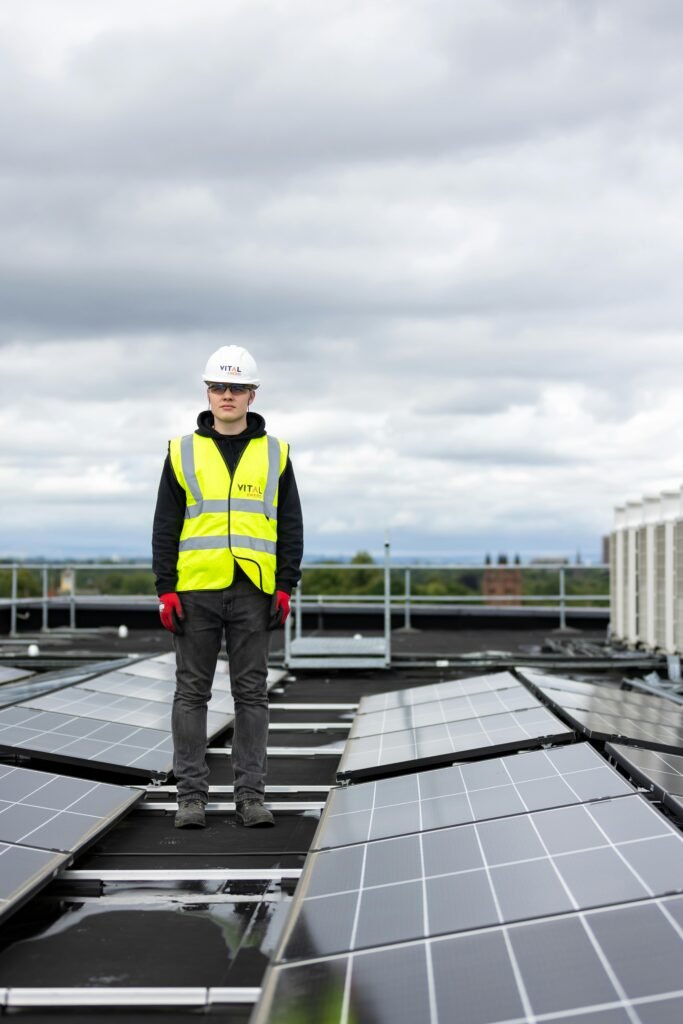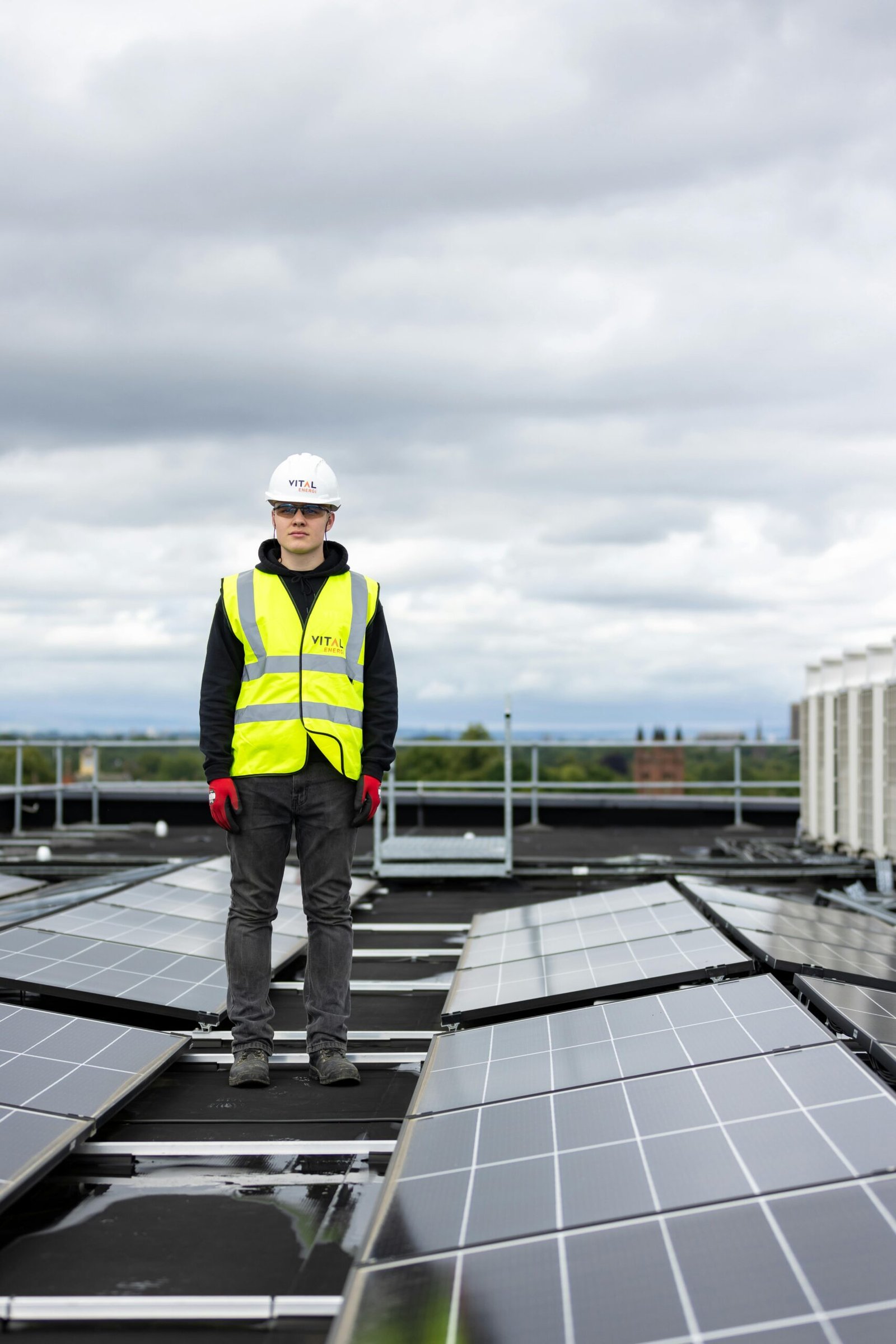If you’re in the market for a gun safe but don’t want to break the bank, considering a used one might be a smart move. However, it’s crucial to inspect the condition of the used gun safe before making a purchase. This article explores the reasons why inspecting the condition of a used gun safe is of utmost importance. From ensuring the safety and security of your firearms to avoiding potential malfunctions or defects, understanding the importance of inspecting a used gun safe will assist you in making the right decision and safeguarding your valuable possessions.

This image is property of images.pexels.com.
Importance of inspecting used gun safes
When it comes to keeping your firearms safe and secure, investing in a gun safe is a wise decision. However, purchasing a brand new gun safe may not always be budget-friendly, leading many gun owners to consider buying used gun safes. While buying a used gun safe can be a cost-effective option, it is crucial to thoroughly inspect its condition before making a purchase. Proper inspection ensures personal safety, prevents accidents and injuries, and ensures the functionality and reliability of the gun safe.
Ensuring personal safety
The primary reason for inspecting a used gun safe is to ensure personal safety. A compromised gun safe may fail to keep your firearms and valuables secure, which can pose a serious risk to you and your loved ones. By thoroughly inspecting the condition of the safe, you can identify any potential issues and address them before bringing it into your home. This inspection helps ensure that the gun safe will effectively do its job of safeguarding your firearms.
Preventing accidents and injuries
A poorly maintained or damaged gun safe can lead to accidents and injuries. For instance, a faulty locking mechanism may result in unintentional access to firearms, risking the safety of individuals in your household. Additionally, a structurally compromised gun safe may fall or topple over, causing harm to anyone nearby. By inspecting the condition of a used gun safe, you can identify any hidden faults or damages that could potentially lead to accidents or injuries, and take appropriate measures to rectify them.
Maintaining functionality and reliability
Gun safes are designed to withstand harsh conditions, protect against theft, and keep firearms secure. However, over time, wear and tear can affect their functionality and reliability. By inspecting a used gun safe, you can assess its overall condition and determine if it meets your specific requirements. Regularly maintaining and inspecting the safe ensures its continued reliability, giving you peace of mind that your firearms are protected.
Factors to consider during inspection
When inspecting a used gun safe, it is essential to evaluate various factors that contribute to its overall quality and performance. Considering the following aspects during your inspection will help you make an informed decision about the purchase.
Exterior condition
Start by examining the exterior condition of the gun safe. Look out for any scratches, dents, or rust that may indicate previous mishandling or subpar maintenance. While minor cosmetic flaws are acceptable and purely aesthetic, extensive damage could be indicative of deeper issues. Pay attention to the overall paint or coating condition, as flaking or fading may suggest a lack of durability or exposure to extreme conditions.
Interior condition
Inspecting the interior of the gun safe is equally important. Evaluate the cleanliness and odor, ensuring that there are no signs of mold or mildew, as these can damage both your firearms and the safe itself. Look for any presence of moisture or condensation, which may lead to corrosion or rust. Additionally, check for damage to the shelving or compartments, ensuring they are sturdy and suitable for securely storing your firearms.
Locking mechanism
One of the most critical aspects of a gun safe is its locking mechanism. Evaluate the type of lock, whether it is electronic, biometric, or combination, and ascertain its smooth operation during testing. Check the availability and security of keys or codes, ensuring that they are not compromised. It is also worth considering the replacement options and associated costs for the locking mechanism if required in the future.
Fireproofing capability
Fireproofing is a vital feature of any gun safe to protect your firearms and valuables from potential fire hazards. Assess the fire rating and certification of the used gun safe, as this will indicate how well it can withstand high temperatures. Examine the insulation materials used, as these play a crucial role in maintaining the internal temperature of the safe during a fire. Additionally, check the integrity of seals and seams to ensure that neither heat nor smoke can penetrate the safe.
Resistant to tampering
A gun safe should be resistant to tampering and unauthorized access attempts. Assess the strength of materials used in the safe’s construction, such as solid steel or composite alloys, to determine their durability against forced entry. Evaluate the quality of the locking bars or bolts, as these contribute to the safe’s resistance against tampering. Look for additional tamper-resistant features like relockers or hard plates, which can further enhance the security of the safe. Consider the safe’s durability against drilling or cutting attempts, ensuring it meets your desired level of protection.
Climate control features
If you live in an area with high humidity or extreme temperature variations, climate control features in a gun safe become crucial. Check for humidity and temperature control mechanisms, such as dehumidifiers or heaters. These features help prevent moisture accumulation, which can lead to rust or corrosion on your firearms. Look for ventilation systems that allow for proper airflow, making sure that the safe provides a suitable environment for storing both firearms and valuable items that are susceptible to climate-related damage.

This image is property of images.pexels.com.
External inspection
Before delving into the internal components of a used gun safe, it is important to inspect its external condition thoroughly. Considering the following aspects will help you gauge the overall quality and safety of the gun safe.
Scratches, dents, and rust
Examine the exterior of the gun safe closely for any scratches, dents, or rust. Minor cosmetic flaws may not impact the safe’s functionality, but extensive damage could compromise its structural integrity. Surface rust or signs of corrosion should be addressed promptly, as they can worsen over time and lead to more significant issues. Ensure that the level of damage is acceptable to you before considering a purchase.
Paint or coating condition
Assess the condition of the paint or coating on the gun safe. A high-quality paint or coating should be durable, resistant to chipping or flaking, and withstand exposure to varying conditions. Faded or peeling paint may indicate poor quality or lack of maintenance, potentially affecting the safe’s protective capabilities. Consider the need for repainting or refinishing if the surface coating is significantly compromised.
Seals and gaskets
Inspect the seals and gaskets of the gun safe, paying particular attention to their condition and integrity. Seals play a vital role in preventing the entry of moisture, smoke, or heat during a fire. Ensure that they are not cracked, worn out, or exhibiting signs of aging. Damaged seals may compromise the fireproofing capability and overall security of the safe.
Damage to hinges or bolts
Check the hinges and bolts of the gun safe for any damage or signs of wear. Hinges should be securely attached and allow for smooth operation of the door. Loose or damaged hinges can impact the stability of the safe and make it prone to failing over time. Ensure that the bolts are in good condition and tightly secure the safe, as loose or broken bolts may compromise the overall security of the safe.
Stability and structural integrity
Lastly, assess the stability and structural integrity of the gun safe. Test its stability by gently rocking it from side to side. A well-maintained safe should remain sturdy and not wobble. Examine the overall construction and welding of the safe, ensuring that there are no visible signs of weakness. A structurally sound gun safe is crucial for its long-term usability and the protection it provides to your firearms.
Internal inspection
After thoroughly inspecting the exterior of the gun safe, it is time to focus on the interior components and assess their condition. The following areas should be carefully evaluated to ensure the safe’s functionality and performance.
Cleanliness and odor
Upon opening the safe, evaluate its cleanliness and odor. A clean interior indicates proper maintenance and care, while a foul odor or signs of mold suggest potential issues. Moisture or condensation within the safe can lead to corrosion and rust, compromising both the firearms and the safe itself. Address any cleanliness or odor concerns before considering the purchase of a used gun safe.
Presence of moisture or condensation
Check for the presence of moisture or condensation within the gun safe. Moisture can contribute to the deterioration of firearms and damage other valuable items stored inside. Ensure that the interior of the safe is dry, and there are no signs of water damage. Consider the need for additional dehumidification measures if you live in a high-humidity environment to prevent future issues.
Damage to shelving or compartments
Inspect the shelving or compartments within the gun safe for any damage. These internal components should be sturdy enough to support the weight of your firearms and other items efficiently. Ensure there are no cracks, breaks, or excessive wear that could compromise the security or organization of the safe. If potential damage is identified, assess the feasibility and cost of repairing or replacing the affected parts.
Corrosion or rust on metal parts
Evaluate the condition of metal parts within the safe, such as the door, walls, or shelving. Look for signs of corrosion or rust, as these can affect the integrity of the safe and potentially damage the contents. Minor surface rust can often be treated or painted over, but extensive corrosion may require more substantial repairs. Consider the level of corrosion and the associated costs of addressing the issue before finalizing your purchase decision.
Functionality of door and locking mechanism
The door and locking mechanism are critical components of a gun safe, as they provide security and control access to your firearms. Examine the functionality of the door, ensuring that it opens and closes smoothly without any sticking or misalignment. Test the locking mechanism thoroughly, ensuring it locks securely and without any unusual resistance. Confirm that the lock engages and disengages effortlessly with the appropriate key or code. Any issues with the door or locking mechanism should be promptly addressed to maintain the safe’s functionality.

This image is property of images.pexels.com.
Locking mechanism evaluation
The locking mechanism of a gun safe is paramount in ensuring the security of your firearms. A comprehensive evaluation of the locking mechanism helps determine its reliability, ease of use, and associated maintenance or replacement requirements.
Type of lock (electronic, biometric, combination)
Identify the type of lock used in the gun safe. There are different options available, including electronic, biometric, and combination locks. Evaluate the pros and cons of each type, considering factors such as convenience, reliability, and potential vulnerabilities. Choose a locking mechanism that aligns with your preferences and offers the desired level of security for your firearms.
Testing lock for smooth operation
Ensure the smooth operation of the lock through rigorous testing. Engage and disengage the lock multiple times, paying attention to any signs of resistance, misalignment, or errors. The lock should function flawlessly, providing secure access to your firearms when needed. If any anomalies are observed during the testing process, consider seeking professional assistance or evaluating the need for potential repairs or replacements.
Key or code availability and security
For traditional locks or combination locks, verify the availability and security of the associated key or code. A missing or compromised key/code can lead to unwanted access to your firearms. If the gun safe does not come with the original key/code, ascertain the options for obtaining a replacement from the manufacturer or a professional locksmith. Additionally, ensure that the key or code is secured and protected from unauthorized individuals to maintain the safe’s integrity.
Replacement options and costs
Consider the availability and associated costs of replacing the locking mechanism if required. Over time, certain lock components may wear out, making replacement necessary for optimal security. Evaluate the feasibility of finding replacement parts, either through the manufacturer or third-party suppliers. Factor in the costs of replacing the lock mechanism when considering the overall value of the used gun safe.
Fireproofing capability assessment
Fireproofing capability is a crucial factor to consider when purchasing a used gun safe. Evaluating the safe’s fire rating and assessing its various fireproofing features ensures that your firearms and valuables are protected in the event of a fire.
Fire rating and certification
Check the fire rating and certification of the gun safe provided by the manufacturer. A credible fire rating ensures that the safe can withstand high temperatures for a specified duration, protecting its contents from fire-related damage. Verify the certification against recognized industry standards, such as UL (Underwriter Laboratories) or Intertek, to ensure the safe’s fireproofing capability complies with reliable benchmarks.
Checking insulation materials
Inspect the insulation materials used within the gun safe to resist heat transfer. High-quality insulation materials, such as ceramic or vermiculite, should be present to provide adequate fireproof protection. Assess the condition of the insulation, ensuring there are no signs of deterioration or damage that could compromise its effectiveness. Well-maintained insulation is crucial for maintaining the internal temperature of the safe during a fire.
Integrity of seals and seams
Examine the integrity of the seals and seams within the gun safe to prevent heat or smoke from infiltrating during a fire. Seals that are damaged or compromised can result in the safe’s contents being exposed to fire hazards. Additionally, consider the condition of the seams, ensuring they are tightly sealed to prevent any gaps that could compromise the fireproofing capability. Well-maintained seals and seams are crucial for a reliable fireproofing performance.
Comparing fireproof ratings to personal needs
Lastly, when assessing the fireproofing capability of a used gun safe, consider your individual requirements. Evaluate the potential fire hazards in your area and determine the fire resistance levels needed to safeguard your firearms and valuables adequately. It is essential to compare the fireproof ratings of the safe with your specific needs to guarantee sufficient protection against fire-related risks.
Tamper resistance examination
A gun safe should be resistant to tampering and forced entry attempts. Evaluating the tamper resistance features and construction of a used gun safe ensures that it can effectively deter unauthorized access and safeguard your firearms.
Strength of materials used
Inspect the materials used in the construction of the gun safe, particularly the walls, door, and frame. The safe should be constructed with robust and durable materials, such as solid steel or composite alloys, to resist tampering. Assess the thickness and quality of the materials, as they play a crucial role in preventing forced entry attempts.
Quality of locking bars or bolts
Evaluate the quality and strength of the locking bars or bolts within the gun safe. These components provide additional security by anchoring the door firmly when the safe is locked. Ensure that the locking bars or bolts are sturdy and made of high-quality materials, preventing them from being easily compromised or tampered with.
Tamper-resistant features (relockers, hard plates)
Look for tamper-resistant features that further enhance the security of the gun safe. Relockers, for example, are components that engage when tampering attempts are detected, making it much more challenging to access the safe. Hard plates are another valuable feature, effectively protecting the lock from drilling or cutting attempts. Assess the presence and effectiveness of such features, as they significantly contribute to the safe’s ability to resist tampering.
Durability against drilling or cutting attempts
Consider the gun safe’s durability against drilling or cutting attempts, as these are common methods used by burglars to bypass locks. Assess the materials and construction of the safe, examining if they are resistant to drilling or cutting tools. Well-built safes incorporate additional layers of protection, such as hardened steel plates or reinforced locking mechanisms, to withstand such tampering attempts. Ensure the safe’s design and construction provide the level of protection you require.
Climate control features inspection
Climate control features are particularly important if you live in an area with high humidity, extreme temperatures, or significant climate variations. Assessing the climate control capabilities of a used gun safe is essential to protect your firearms and other valuables.
Checking humidity and temperature control mechanisms
Evaluate the gun safe’s humidity and temperature control mechanisms, such as built-in dehumidifiers or heaters. These features help regulate and maintain ideal conditions within the safe to prevent moisture-related issues like rust or corrosion. Check the operational effectiveness of these mechanisms, ensuring they can efficiently control humidity and temperature levels within the safe.
Moisture prevention and ventilation systems
Inspect the moisture prevention and ventilation systems employed in the gun safe. Proper airflow and ventilation prevent the buildup of moisture within the safe, reducing the risk of rust or mold. Ensure that the safe has adequate ventilation to allow for proper airflow, especially if you live in a high-humidity environment. Well-designed moisture prevention and ventilation systems help maintain an optimal climate within the safe, preserving the condition of your firearms.
Suitability for storing firearms and valuable items
Consider the suitability of the gun safe for your specific storage requirements. Different firearms and valuable items may have unique climate control needs. Evaluate the size, capacity, and specialized features of the safe to determine if it can efficiently store your firearms and protect them from climate-related damage. A safe with climate control features ensures the long-term preservation and functionality of your firearms.
Additional considerations
When purchasing a used gun safe, several additional considerations can help ensure a satisfactory experience. These factors include the manufacturer’s reputation and warranty, cost of repairs or upgrades, and the availability of spare parts and professional assistance.
Manufacturer reputation and warranty
Research the reputation of the manufacturer of the used gun safe before making a purchase. Look for established brands with a history of producing high-quality and reliable safes. A reputable manufacturer often provides warranties, demonstrating their confidence in the product’s quality and durability. Investigate the warranty provided for the used gun safe, considering the coverage period and terms. A solid warranty provides an extra layer of protection and reassurance in your investment.
Cost of repairs or upgrades
Consider the potential cost of repairs or upgrades for the used gun safe. While a used safe may initially be budget-friendly, it could require additional investments to bring it to optimal condition. Assess the condition of the safe during the inspection process and estimate the costs of necessary repairs or desired upgrades. Factoring in these costs allows you to make a well-informed decision about the overall value of the used gun safe.
Availability of spare parts and professional assistance
Evaluate the availability of spare parts and professional assistance for the used gun safe. Over time, certain components may require replacement or maintenance. Ensure that the manufacturer or authorized dealers offer readily available spare parts. Additionally, confirm the availability of professional assistance for any repairs or modifications required in the future. Having access to spare parts and expert assistance ensures the longevity and reliability of your used gun safe.
Importance of professional inspection
While performing a personal inspection is essential, seeking professional inspection services for a used gun safe is highly recommended. Professional inspectors possess expertise in identifying hidden damages or faults that may not be apparent to the untrained eye. By enlisting their services, you can benefit from their in-depth knowledge of gun safe construction, fireproofing, and tamper resistance measures.
Expertise in identifying hidden damages or faults
Professional inspectors specialize in understanding the nuances of gun safe construction and can identify hidden damages or faults that may not be immediately noticeable. Their trained eye can spot issues related to structural integrity, component wear, or compromised security features. Relying on their expertise helps ensure that you are fully aware of any potential problems or risks associated with the used gun safe.
Evaluation of overall condition and value
Professional inspection provides you with a comprehensive evaluation of the overall condition and value of the used gun safe. Instead of relying solely on your own assessment, an expert opinion can confirm the safe’s current state and functionality. Their evaluation helps determine the fair value of the safe based on its condition, performance, and any necessary repairs or upgrades. This information equips you with the knowledge needed to negotiate a fair price or make an informed decision about the purchase.
Peace of mind in purchasing a used gun safe
Perhaps the most significant advantage of seeking professional inspection is the peace of mind it brings. Buying a used gun safe involves entrusting the safety and security of your firearms to a pre-owned product. By having a professional inspect the safe, you can rest assured knowing that any potential safety risks or issues have been thoroughly assessed. This peace of mind allows you to confidently proceed with the purchase, knowing you have made an informed decision regarding your personal safety and the protection of your firearms.
In conclusion, inspecting the condition of a used gun safe is of utmost importance. It ensures personal safety, prevents accidents and injuries, and maintains the functionality and reliability of the safe. By considering factors such as the exterior and interior condition, locking mechanism evaluation, fireproofing capability assessment, tamper resistance examination, climate control features inspection, and additional considerations, you can make a well-informed decision when purchasing a used gun safe. Seeking professional inspection services further enhances your understanding of the safe’s condition and adds a layer of reassurance. Remember, investing time and effort into inspecting a used gun safe is a small price to pay for the peace of mind it brings in safeguarding your firearms and valuable items.
